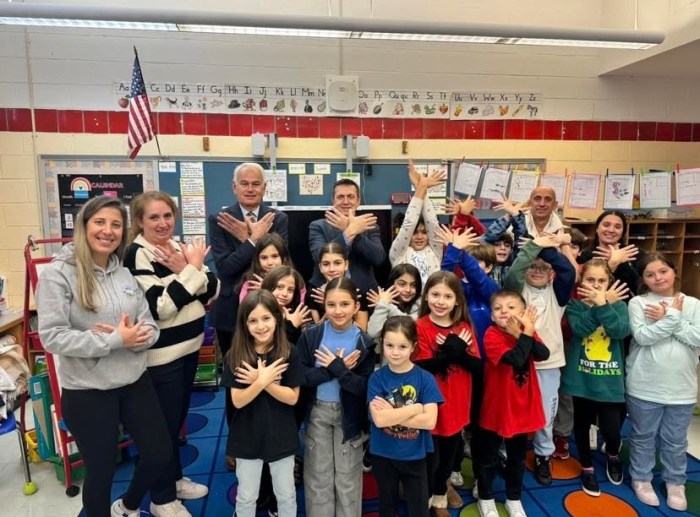By Dustin Brown
You know what they say about one man's trash.
Students at International High School in Long Island City had their doubts when their art and science teachers told them to mine aesthetic treasure by fashioning garbage into art.
But they are skeptics no more.
“It sounded kind of crazy. Garbage and art, they don't match,” said Johnny Siguencia, 17, a senior originally from Ecuador. “When you take garbage and put it in order, it actually can be beautiful. Garbage can actually be useful if you do the right things.”
Eliot Lable, a Long Island City sculptor who teaches art at International HS, teamed up with science teacher Alison Fornes to concoct the interdisciplinary project, which not only gave students a chance to create art from “found objects” – items that ordinarily would get thrown away – but also forced them to study the way garbage decomposes.
The four-month endeavor culminated in an exhibition Friday in which 65 students mounted their three-dimensional trash panels along a hallway while lining their classrooms with displays documenting the results of their scientific experiments.
The project had a special significance at International HS, where all students are immigrants to the United States, the nation that happens to be the world's largest garbage producer.
Claudia Gomez, 16, made a collage with political overtones, crafting New York City skyscrapers from bits of garbage she placed around a cutout of Mayor Michael Bloomberg, whom she criticized for restricting the city's recycling program.
“If we stop recycling, this is how New York is gonna look,” said Gomez, an East Elmhurst resident originally from Colombia. “We're gonna have a city made of garbage.”
Siguencia's piece touched on a similar theme. His canvas showed an attractive multi-story house facing an encroaching pile of garbage that festered in a tall mound.
“My point was to show people how garbage can mess up the environment,” Siguencia said.
Szymon Banach's project featured a collection of misshapen Coke cans splayed onto a canvas beneath the question, “What do you do with your cans?”
“The idea is, you have a content that makes the art that much stronger,” Lable said. “This broadened how you could use art to make a statement.”
The students derived inspiration by visiting MoMA QNS and viewing works of art that placed three-dimensional objects onto a flat canvas, much the way they did with their pieces of garbage. Many of the materials the students used were donated by Materials for the Arts, a Long Island City organization that salvages items which would otherwise go into a landfill and offers them to artists across the city.
“They broaden their idea of what art is – it doesn't have to be painting, drawing, sculpture,” Lable said. “It's not just that, it's bigger.”
On the science side, students studied ways to get New York City apartment dwellers to compost their trash and examined whether the substances that break down food scraps, like mold and yeast, are living things.
They saw firsthand how easy composting can be. Students dumped their food refuse like banana peels and apple cores into cut-open soda bottles and left a row of them in the classroom's windowsill, watching day by day as nature's candy wrappers gradually turned to soil.
For her experiment, 17-year-old Tina Sam measured a mixture of yeast and sugar over time, finding that it lost mass because carbon dioxide was released when the two interacted.
“Yeast is just like a human,” said Sam, an immigrant from India who lives in Jamaica. “Humans get energy from food, yeast gets energy from sugar.”
Reach reporter Dustin Brown by e-mail at Timesledger@aol.com or call 229-0300, Ext. 154.

































